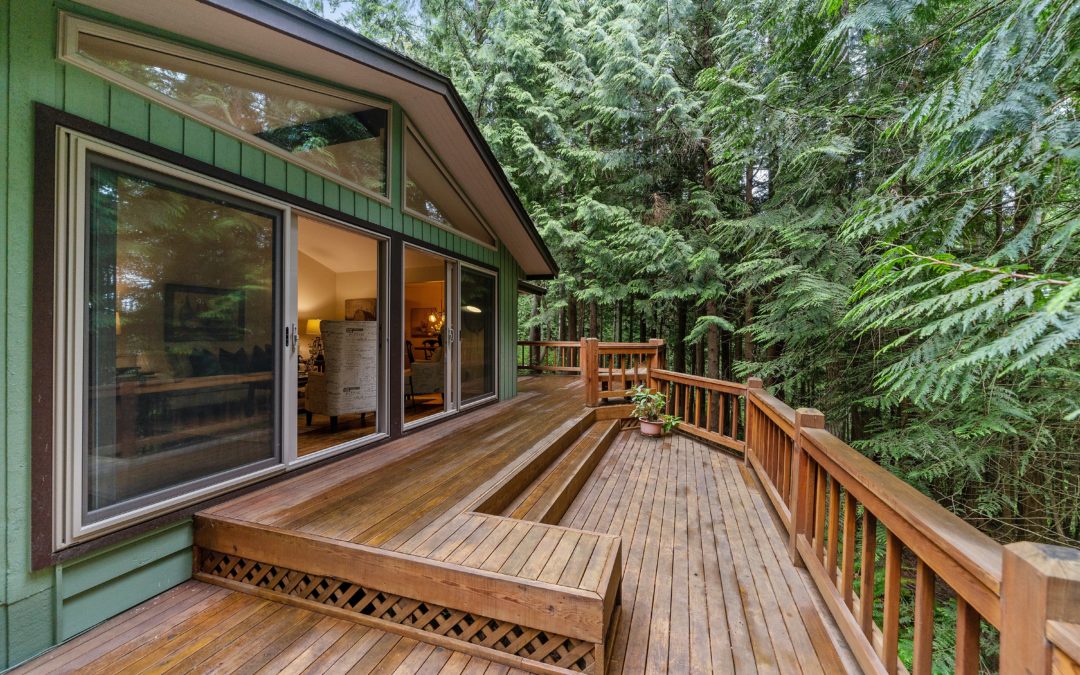Summer is finally here in Michigan, and with the warmer weather comes a whole host of home improvement projects. One of the most popular by far is deck repair. Especially in colder climates where decks can take a beating over the winter when summer rolls around, it’s a chance for us all to get outdoors and get that deck looking good again.
If you’re gearing up for a decent-size deck repair project this summer, you’ll probably have found plenty of information about how to cut and place new boards, but you might not have all the info you need about preparing and starting your deck repair project.
This article aims to help you figure out how much repair you’re going to need to complete, what materials you’ll need to do it, and how you get started with all of that. Let’s start by determining how much repair your deck will need this summer:
01. Figure Out What Parts of Your Deck Should Be Replaced
The first step to any deck repair project is figuring out what you’re going to have to do. If you’re embarking on a regular deck repair project, chances are you’ve got a wood deck. To figure out what parts of your deck need to be replaced, you’ll need a hammer or screwdriver. Walk around your deck, and look for large cracks or curling boards.
Take the time to walk both on and around your deck. If you notice a soft or loose board, tap it gently with your hammer or screwdriver. If the wood is soft and squishy or sounds wet when you tap it, that board has water damage and needs to come out. Loose boards that aren’t water damaged may just be re-fastened, so long as they’re not too warped.
Follow the same process for the outside of your deck. Any boards that are split, seriously warped, or rotting should come out. Once you finish your inspection, you’ll have a good idea of how much work you’ll have to put into this deck repair project.
Is this something you can handle yourself, or would you be better served with professional help?
It’s worth noting that if a majority of your deck is rotted or extremely warped, this could be a good opportunity to upgrade your deck. If you’ve been looking into composite decking, this might be the right time to rebuild.
02. Pull Up Old, Rotted Boards
If you’ve decided you’ll handle this deck repair project on your own, the next step is to pull out those old, rotted and warped deck boards. The best method is typically to use a hammer and a pry bar. Be sure to pull out any nails or screws that might remain after you’ve pulled out a board.
While you’re pulling up boards, take a look at the joists and support beams under your deck. Make sure you’re checking out those support beams as you move along your deck. If you felt any unstableness or wobbling when you were walking around your deck earlier, you likely have a support issue. It’s important to find those problems now, while you’re in the process of tearing your deck apart. If you complete a huge deck repair project, only to realize you have a support problem once it’s all done, you’ll have wasted a lot of money and time.
03. What Material is Right for your Deck Repair?
Now that you’ve got all of those old and rotted boards out of your deck, it’s time to make a decision on materials.
If it feels like you pulled out pretty much all of the deck you had, you might consider upgrading to something other than wood. Composite decking is a great option because it offers low-maintenance long-lasting durability. Once it’s installed, you won’t have to worry about repairing your deck for years to come. If you’re interested, Trex is our favorite composite decking brand and an industry leader.
If you’re sticking with a wood deck, you have the option of softwood, hardwood, or pressure-treated lumber. In most cases, if you’re just replacing a few boards, you’ll want to stick to whatever lumber is already on your deck. Choosing another lumber species will lead to a mismatched deck.
Some deck repair projects call for a total replacement of the top deck boards of your deck. If that’s your case, and you’ve decided to stick with wood, here are a few options to choose from:
Pressure-treated lumber is an affordable material that’s treated to resist pests, mold, and fungus. It’s also developed to reduce warping and weathering you’ll see in other natural wood decking options.
More expensive softwoods like cedar and redwood are also great options for natural pest resistance, and hardwoods like mahogany offer extreme durability, but they are a bit more difficult to work with and will require a higher investment level.
For more information on the different types of decking materials, this article, How Much Does it Cost to Build a New Deck will help you price out what materials are right for your budget.
04. How Much Material Will You Need?
Once you’ve decided on the right decking material for your deck repair project, it’s time to plan for your trip to the lumber store.
Take a look at how much wood you pulled up. How many boards do you have laying around? That should give you a pretty clear idea of how much wood you’ll need. It’s a good idea to add a bit extra as a precaution. In case you have a board split or you make a mistake, it’s handy to have a few extra boards to fall back on.
You’ll also want to pick up your decking screws when you’re at the lumber store. In general, each board should receive two screws every time it crosses a deck joist. That should help you figure out how many decking screws you need, but you can use one of the many decking material calculators like this one available online for a more precise calculation.
05. What Tools Should You Have Handy Before You Start Your Deck Repair Project?
Now that you’ve got your project prepped and ready, and you’ve picked up all of your materials, it’s time to get started on your deck repair project! At this point, you’ll need to cut your boards to size, sand any rough edges, and fasten them to your deck joists. Once you’ve got all of those boards fastened in, it’s time for a quick deck stain, and you’re done! Here’s a list of materials to have handy before you start the actual work of your deck repair:
- Pencil
- Measuring Tape
- Carpenter’s Square
- Miter Saw
- Sanding blog
- Deck Screws
- Drill
- Deck Stain
With all of those tools gathered, you’re off on your deck repair project. We hope it goes well, and you’re back to relaxing in your outdoor space in no time! If you’re looking for materials for your deck repair project, look no further than Zeeland Lumber & Supply. We’ve got everything you need for your deck repair, from decking screws to a variety of lumber options including treated southern yellow pine, cedar, and much more. For more information, give our team a call at 888-772-2119, stop into one of our locations, or contact us online today.


